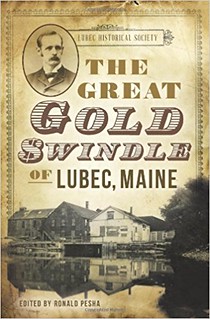
PREV ARTICLE
NEXT ARTICLE
FULL ISSUE
PREV FULL ISSUE
NOTES FROM E-SYLUM READERS: APRIL 2, 2017The ABCs of PDOS
Apropos the interesting biography of numismatic publishing pioneer Wayte Raymond, I wonder how many of our fellow E-Sylum readers have noticed that Raymond books and coin albums listed mint marks in chronological order based upon the years that the different mints were established, such as (P), O, S and D, while the more modern Whitman products list them in alphabetical order (other than Philadelphia which is always first.) I am reliably informed that this is due to the fact that the early Whitman products copied the Raymond mint mark order, and it was suggested to them by the then-mighty Raymond empire that this might be an infringement of the copyright laws. Interesting point, and a very plausible explanation. We take our coin organization schemes for granted today, but back in the day, collectors and publishers were still reckoning with
how best to arrange the coins of the United States. Earlier in this issue is a related article by Len Augsburger on Augustus Heaton's work on mint marks, and how the hobby changed its treatment
of branch mint coins and the arrangement of auction catalogs. -Editor
To read the earlier E-Sylum article, see:
Bibliophemera
I came across a new vocabulary word today, bibliophemera. This would be ephemera related to books, stationers, and book sellers. I have been collecting numismatic bibliophemera but didn't know it had a name. I recall visiting Wayne Homren's home and library. Wayne had a large collection of numismatic bibliophemera in loose leaf notebooks in his garage, although I don't think that was normally where they were kept. No, they live in my library inside the house - tables in the garage served as an easier place for my visitors to view them during the 2004 Pittsburgh ANA convention. -Editor
Book: The Great Gold Swindle of Lubec, Maine
The scam you reference is a neat story, indeed… so much so that there is of course a book about it. Jeff forwarded a link to the 2013 book on Amazon. Thanks! -Editor
For more information, or to order, see:
To read the earlier E-Sylum article, see:
 Wayne Homren, Editor The Numismatic Bibliomania Society is a non-profit organization promoting numismatic literature. See our web site at coinbooks.org. To submit items for publication in The E-Sylum, write to the Editor at this address: whomren@gmail.com To subscribe go to: https://my.binhost.com/lists/listinfo/esylum All Rights Reserved. NBS Home Page Contact the NBS webmaster 
|
